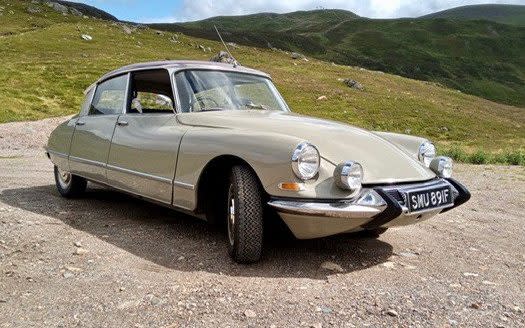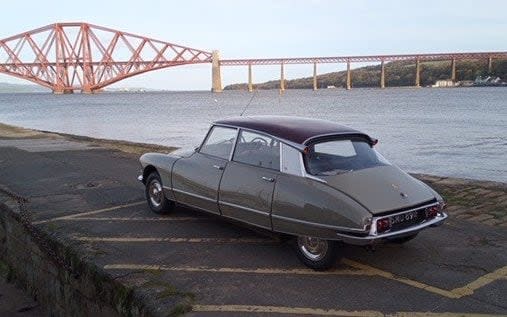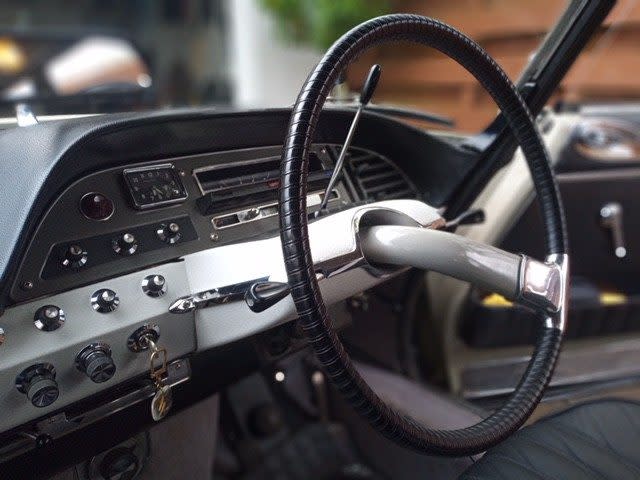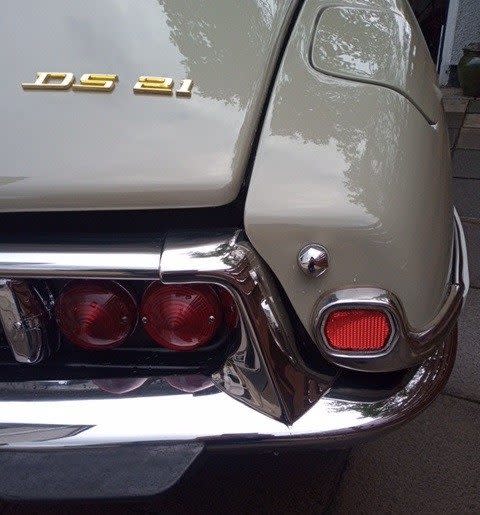UK’s rarest cars: 1967 Citroen DS21 Pallas, one of only two left on British roads

Fifty-six years ago, the extraordinary DS21 Pallas seemed to have no direct British rival. The Ford Zodiac Mk3 Executive and Vauxhall Viscount were too quasi-American, and the Vanden Plas Princess 4-Litre R too staid. The potential customer might have looked at the Rover 2000 TC or the Daimler V8 250, but these fine vehicles possessed neither the Citroën’s front-wheel-drive layout nor its insouciant charm. And today, Willie Bennie’s 1967 Pallas is one of the most exclusive versions of the remarkable DS still on the road.
To survey the DS’s complicated and often enigmatic history is sometimes akin to being trapped in a Harold Pinter play. The original DS19 of 1955 was powered by a 1,911cc four-cylinder engine. Seven years later, the range gained modified frontal treatment as the Type 2, then in 1965 Citroën introduced the DS21, with a 2,175cc engine. In addition, there was the new Pallas specification, which seemed perfect for French haute bourgeoisie motorists who might have otherwise bought a Mercedes-Benz 220SE.

In the UK, the Pallas cost a formidable £1,977 3s 9d. However, the specification included quartz-iodine driving lights, extra sound deadening and an even more opulent cabin with an auxiliary heater for the rear passengers. The top speed was a respectable 112mph, and Autocar regarded the Pallas as “the most luxurious, as well as the fastest Citroën ever marketed”. Meanwhile, this newspaper approved of the self-levelling headlights operated mechanically from the anti-roll bars and how the new engine’s performance complemented the striking styling.
Early examples of the UK-market Pallas were assembled in Slough to circumvent import duties, but in early 1966 a 40-year tradition of British-built Citroëns ended. However, Bennie notes that his DS “has Lucas round tail lamps and chrome number plate lights. Apparently, these were fitted to the [French-built] UK-specification cars until the stock was used up”.

His DS21 was registered on 1 August 1967 in Middlesex and is one of the last Type 2s before Citroën unveiled the Type 3, featuring faired-in directional headlights, that September. Bennie also notes: “In late 1966, Citroën changed the hydraulic fluid from LHS, which absorbed water leading to all sorts of problems, to the much more stable LHM. It appears there may be only two cars left in the UK with this specification.” Only 73 examples of all types of DS21 still exist.
Production of the DS ended in 1975 after 1,455,746 units. Bennie had craved one since 1967 when he was 12 and saw a newspaper article. He observes: “I believe that the first owner of my car was the director of a shipping company. The Pallas was then registered to his daughter, who lived in Rhu on the west coast of Scotland. In the mid-80s, it was bought by an enthusiast in Glasgow who then sold it to a successful artist.”

The Pallas had been restored in the late 1980s but it was not in the best condition when Bennie first saw it. He recalls: “It had been in the garage for 16 years and was a sorry-looking sight, but had only done 42,000 miles with only four owners. We bought it in December 2014 and it finally got back on the road last April.
“The body is the original Gris Kandahar [Kandahar Grey] colour, but we added the Bordeaux roof for some contrast, and almost everyone who sees it is impressed with the combination.”
Since then, the DS has covered more than 6,000 miles. Aside from a breakdown last August due to a bearing in the hydraulic clutch seizing, it has more than lived up to Bennie’s expectations. In 1967 Citroën described the Pallas as “a car that’s absolutely unlike any other”, which was no mere hyperbole. Its only true competitor was the NSU Ro80, while many other large European saloons appeared to hail from the Ark by comparison.

When writing about the DS, it seems almost obligatory to quote Roland Barthes’s description in his book Mythologies: “it appears at first sight as a superlative object”. But there is an equally memorable description in Motor Sport when the magazine compared the Pallas with Charles de Gaulle. “It has been said of the General that his mysterious personality and apparent destiny have made him uncharacteristic and unpredictable, a description that fits also the Citroën.” Enthusiasts would not have it any other way.
More like this: UK’s rarest cars: 1981 Renault 14, one of only six left on British roads
For new and used buying guides, tips and expert advice, visit our Advice section, or sign up to our newsletter here
To talk all things motoring with the Telegraph Cars team join the Telegraph Motoring Club Facebook group here

 Yahoo News
Yahoo News 